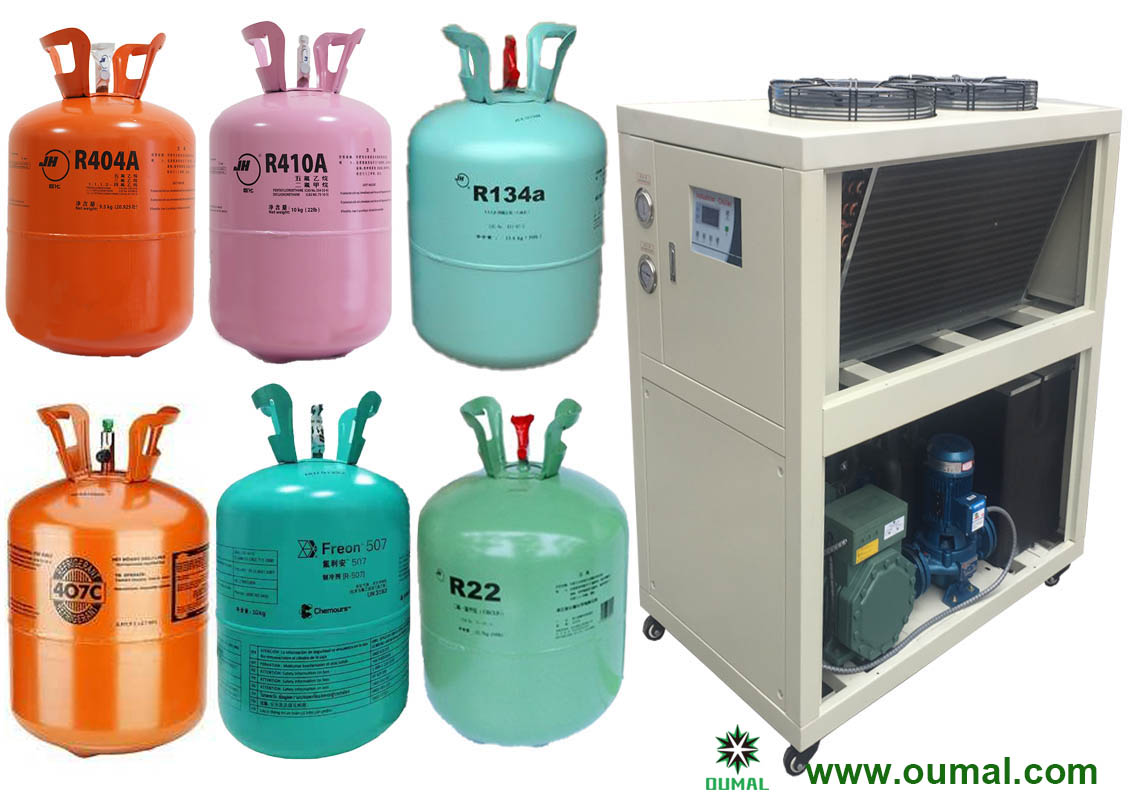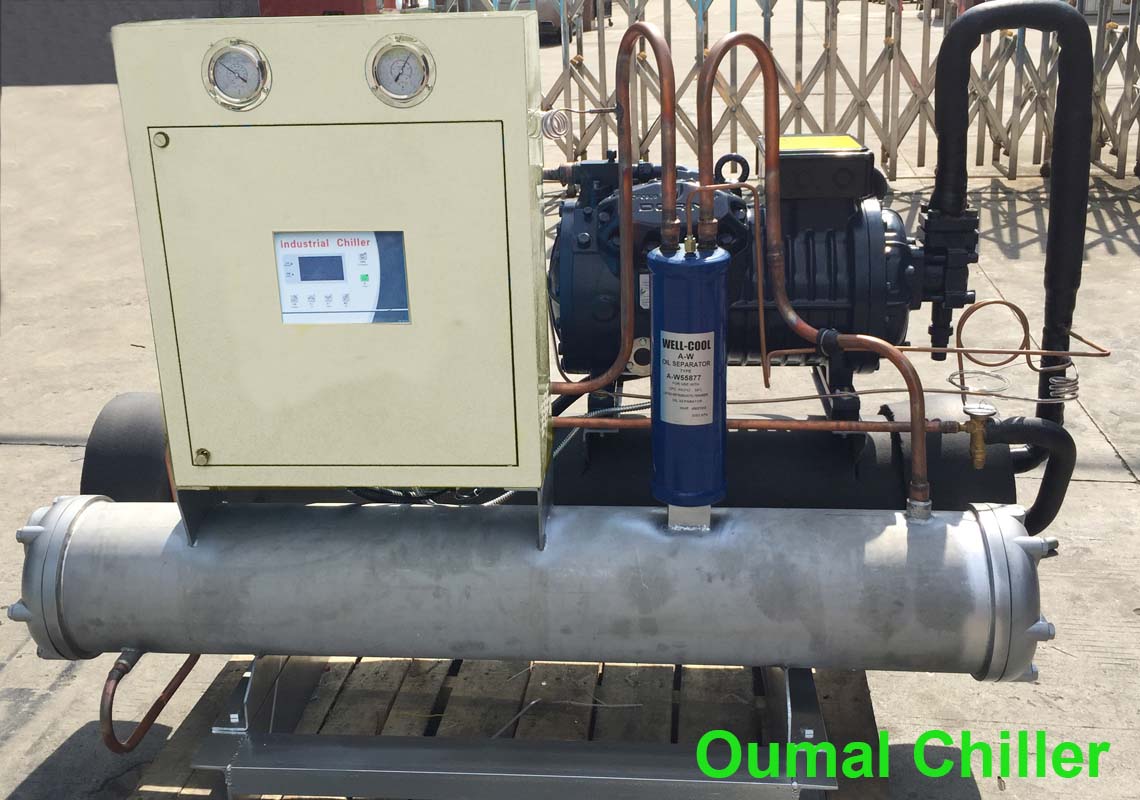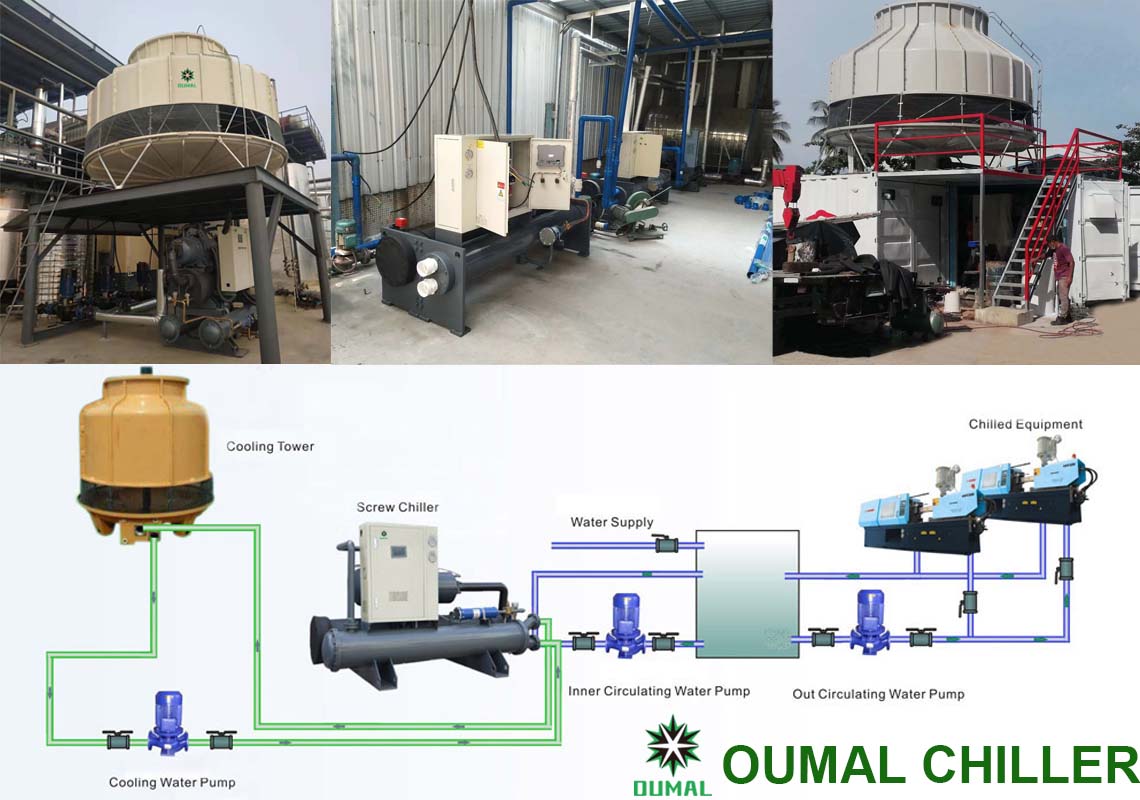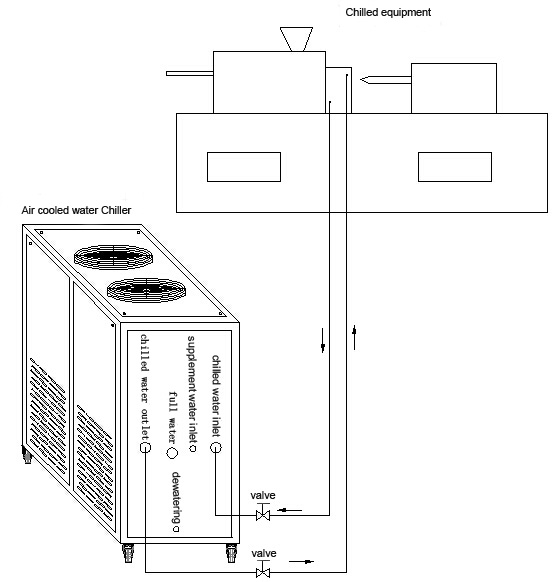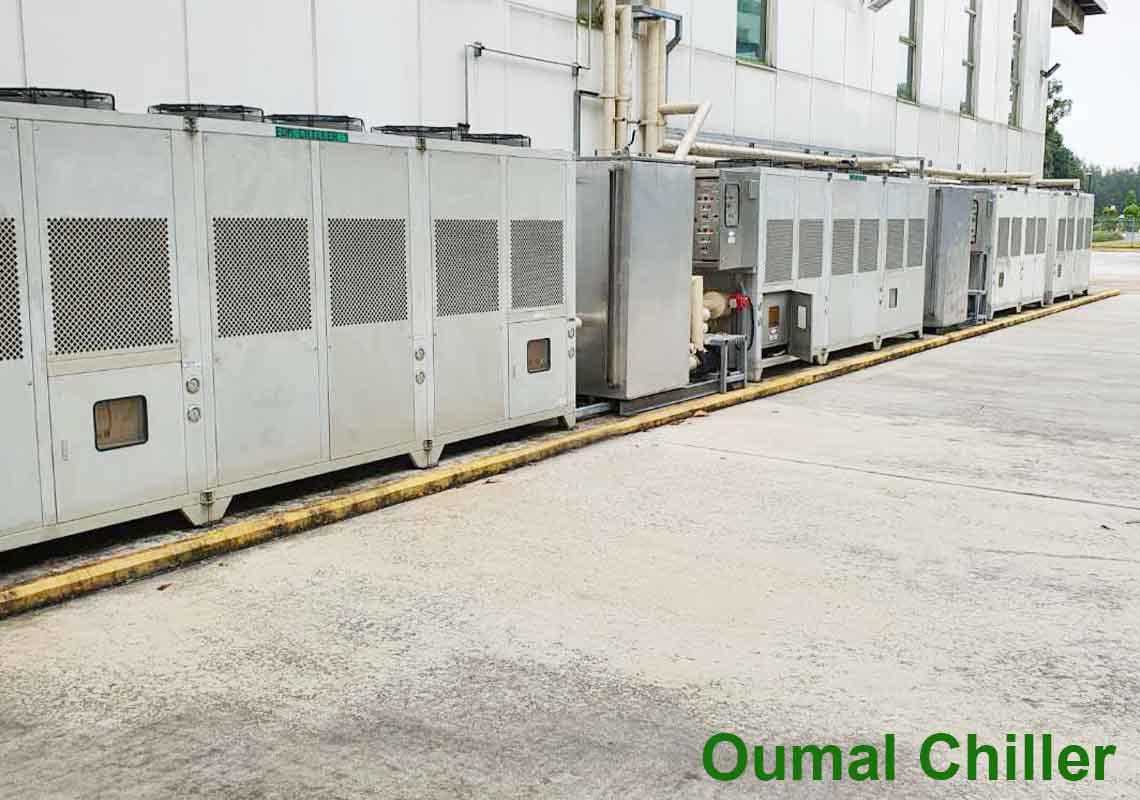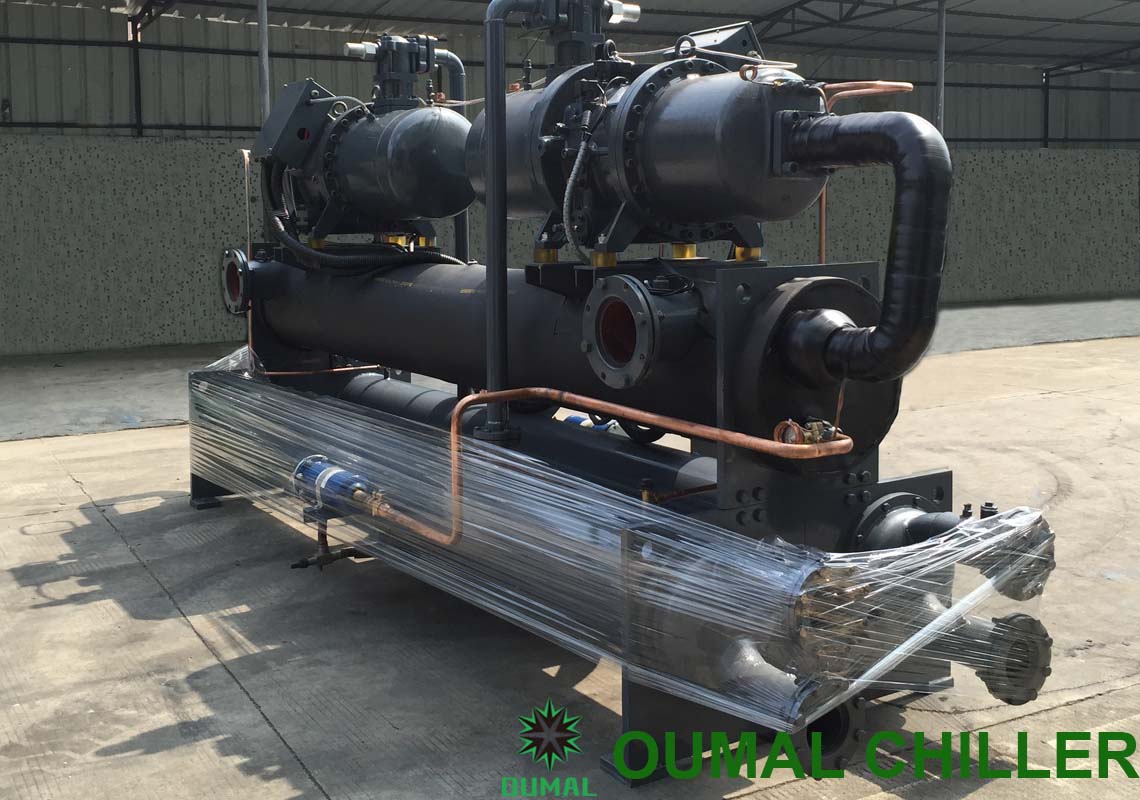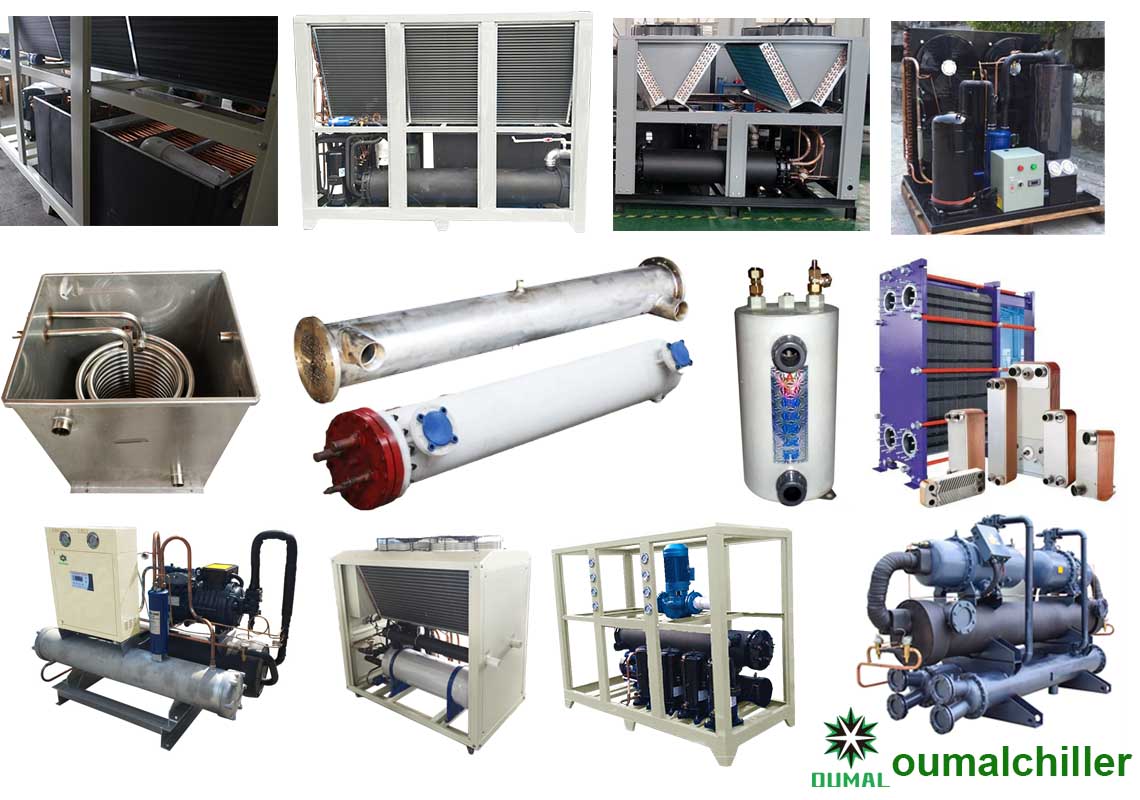Industrial chiller is a kind of
high-efficiency refrigeration equipment widely used in industrial production.
It can provide great help for various industrial productions. However, if the
antifreeze position of the low-temperature chiller has dropped, it needs to be
dealt with in time. In order not to affect the stable operation of the
equipment, or even reduce the overall cooling performance of the equipment, to
increase the antifreeze capacity of the low-temperature chiller in
low-temperature areas requires the following skills
1. For the screw chiller, the amount of
antifreeze is not the better, and when adding, the overall concentration of the
antifreeze can be reduced, and the best filling effect can be obtained. The
lower the concentration, the smallest range of influence on the screw chiller
during operation. By carefully analyzing the operating environment and adding a
suitable amount of antifreeze for screw chillers, the probability of equipment
failure can be reduced.
2.
The shorter the replacement period of antifreeze, the better. When using a screw chiller, in order to maintain the safe and stable operation of the
equipment, it is necessary to determine the specific replacement period of the
antifreeze of the screw chiller according to the use environment. The shorter
the replacement cycle is, the stability of the antifreeze can be maintained, so
as to achieve the effect of protecting the stable operation of the screw
chiller.
It can be said that antifreeze is a
professional condensing agent necessary for professional refrigeration of many
industrial chiller products, and it is also an efficient refrigeration
substance. For industrial chillers, the amount of antifreeze is not the better,
and when adding, the overall concentration of the antifreeze can be reduced,
and the best filling effect can be obtained.
Industrial chillers also have industry
specifications and standards for antifreeze requirements. When using
antifreeze, they must be used in accordance with the application standards. The
lower the concentration, the various impacts on the industrial chiller during
operation. At the minimum, by carefully analyzing the operating environment and
adding a suitable amount of antifreeze for low-temperature chillers, the
probability of equipment failure can be reduced. Both chillers and
low-temperature chillers are inseparable from antifreeze.
In winter, the use of industrial chillers
is inseparable from the addition of antifreeze. The full name of its antifreeze
is called antifreeze coolant, which means a coolant with antifreeze function,
which is mainly used for antifreeze in the winter.
The requirements of Oumal industrial
chiller for antifreeze performance:
1. Stable chemical performance.
2. Good antifreeze performance.
3. The low temperature viscosity is not too
big.
4. Anti-corrosion and anti-rust properties.
5. It has no swelling and corrosive
properties to rubber sealed conduits.
How to choose the antifreeze for the
chiller?
In order to greatly improve the cooling
performance of the chiller, after a period of use, users need to maintain the
chiller regularly. During maintenance, especially in winter, do not neglect to
replace the antifreeze for the chiller. If the chiller is maintained without
replacing or adding antifreeze, the cold temperature in winter can easily cause
freezing of the pipe. When the chiller is operated for a long time, the
equipment is prone to various common failures, which will seriously affect the
service life of the equipment , Even leading to the continuous increase in the
cost of using the chiller.
High-quality antifreeze can not only
maintain the safe and stable operation of the chiller. If the replacement of
the antifreeze is often neglected when the chiller is maintained, the equipment
will run for a long time and be prone to high temperature failures. When the
chiller is at a high temperature, it not only affects the operating power of
the chiller, but also causes the operating life of the chiller to continue to
shorten. The shortened lifespan of the chiller affects the cost of the
company's use of the chiller, and the longer the company uses the chiller, the
more energy it consumes.
So, how to choose the antifreeze for the
chiller?
1. When choosing an antifreeze product, in
order to maintain the safe and stable operation of the equipment, it is
necessary to periodically select a lower concentration antifreeze for
replacement.
2. When buying antifreeze for chillers, you
need to choose a product with a longer period of time. If the chiller is used
for a long time and the probability of equipment failure is low, then the cost
of replacing the antifreeze for the company can be fully controlled. The longer
the antifreeze is used, the lower the cost of replacing the antifreeze, thereby
extending the life of the chiller. The longer the life of the equipment, the
higher the cost-effectiveness of the company's use of industrial chillers,
ensuring that the company can complete production tasks at low cost.
When replacing antifreeze products, you
need to choose an antifreeze that meets the equipment operating standards. If
the operating index of the antifreeze is low, it is easy to cause common
failures of the chiller and endanger the operational safety and life of the
equipment. Replacing the antifreeze that is suitable for the equipment can
prolong the service life of the antifreeze and provide conditions for saving
the cost of operating industrial chillers.
The commonly used antifreezes mainly
include:
① Ethanol, the freezing point and boiling
point of ethanol are relatively low, in order to prevent fire, it is generally
not used.
②Glycerin, mixed with water, is very
expensive and not very economical.
③ Ethylene glycol, the freezing point of
ethylene glycol is -11.5°C and the boiling point is 197.4°C, and the lowest
freezing point after mixing with water can reach -68°C; ethylene glycol is easy
to corrode metals, and anti-corrosion agent should be added when preparing
antifreeze. Generally, add 2.5 to 3.5 grams of disodium hydrogen phosphate and
1 gram of dextrin per liter of antifreeze; ethylene glycol has strong
hygroscopicity, and the storage container should be sealed; ethylene glycol is
not easy to volatile, and the amount used in preparation is small, so it is
widely used. The thermal expansion of various antifreeze fluids is relatively
large, and can only be added to 95% of the total capacity of the cooling system
when filling; when the antifreeze fluid is deployed, its freezing point should
be 5 degrees lower than the lowest temperature in the area of use.
Oumal specializes in the production of
various types of chillers, ice water chiller machine, screw type chillers, scroll type
chillers, screw type low temperature chillers. For more water chiller prices,
please contact us, we will provide high-quality Water chillers, and
preferential water chiller system prices, provide a low-temperature cooling
water system for your production, and provide product quality and cost.
